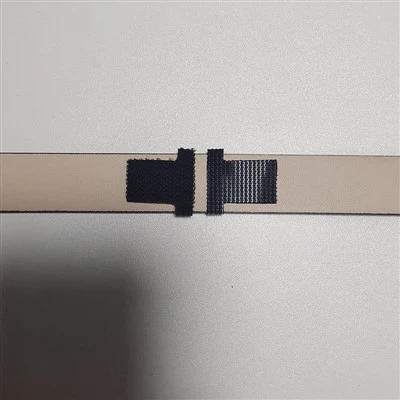Hey there! As a grommeting supplier, I often get asked about the standard spacing for grommets in grommeting. It's a crucial aspect that can significantly impact the functionality and aesthetics of the final product. So, let's dive right in and explore this topic in detail.
First off, what are grommets? Grommets are small, usually metal or plastic rings inserted into a hole in a material, like fabric, leather, or plastic sheeting. They're used to reinforce the hole, prevent tearing, and provide a smooth edge for things like ropes or cords to pass through. You can learn more about grommeting on our Grommeting page.
Now, onto the main question: what's the standard spacing for grommets? Well, there isn't a one - size - fits - all answer. It depends on several factors, and I'll break them down for you.
1. The Purpose of the Grommeted Item
The intended use of the item plays a huge role in determining grommet spacing. For example, if you're making a tarp that needs to be tied down securely, you'll want the grommets to be closer together. A spacing of 6 to 12 inches is common for tarps. This allows for more attachment points, ensuring that the tarp stays in place even in windy conditions.
On the other hand, if you're working on a decorative curtain with grommets for hanging, a wider spacing might be acceptable. You could space the grommets 12 to 24 inches apart. This gives the curtain a more elegant look and still provides enough support for hanging.


2. The Material Being Grommeted
The type of material also affects the spacing. If you're working with a heavy - duty material like canvas or thick vinyl, you can generally space the grommets a bit farther apart. These materials are more resistant to tearing, so they can handle more stress between the grommets.
For lighter materials such as silk or thin polyester, you'll want to space the grommets closer together. These fabrics are more delicate and can tear easily, so more grommets provide extra reinforcement.
3. The Size of the Grommets
The size of the grommets themselves is another factor. Larger grommets can typically support more weight and stress, so you might be able to space them farther apart compared to smaller grommets.
For instance, if you're using 1 - inch diameter grommets, you could space them 10 to 15 inches apart in a medium - duty application. But if you're using 1/2 - inch diameter grommets, you might want to reduce the spacing to 6 to 10 inches.
Standard Spacing Guidelines
Here are some general guidelines for different applications:
Tarps and Outdoor Covers
As I mentioned earlier, for tarps and outdoor covers, a spacing of 6 to 12 inches is common. This ensures that the tarp can be tied down firmly at multiple points. The closer the spacing, the more secure the tarp will be, especially in high - wind areas.
Curtains and Drapes
For curtains and drapes, a spacing of 12 to 24 inches is typical. This gives the curtain a nice, flowing look while still providing enough support for hanging. You can adjust the spacing based on the weight and fullness of the curtain.
Banners and Signs
Banners and signs usually have grommets spaced 8 to 16 inches apart. This allows for easy hanging and ensures that the banner stays flat and doesn't sag.
Upholstery
In upholstery work, grommets are often used for decorative purposes. A spacing of 4 to 8 inches can create an attractive pattern. However, if the grommets are also serving a functional purpose, like attaching a cushion to a frame, you'll need to consider the load - bearing requirements.
Measuring and Marking for Grommet Spacing
Once you've decided on the appropriate spacing, it's time to measure and mark the locations for the grommets. Here's a simple process:
- Start by measuring the edges of the material where you want to place the grommets.
- Use a ruler or a measuring tape to mark the spacing intervals. You can use a pencil or a fabric marker to make the marks.
- Make sure the marks are straight and evenly spaced. You can use a straight edge or a level to help with this.
If you're working on a large project, it might be a good idea to double - check your measurements before starting the grommeting process.
The Grommeting Process
After marking the locations, it's time to install the grommets. The process can vary depending on the type of grommets and the material. Some grommets can be installed using a simple hand - held tool, while others might require a more specialized machine.
If you're not familiar with the grommeting process, you can find more information on our Grommeting page. We also offer Sewing and Slitting services, which can be used in conjunction with grommeting for a complete project.
Conclusion
In conclusion, the standard spacing for grommets in grommeting depends on the purpose of the item, the material being used, and the size of the grommets. By considering these factors and following the general guidelines, you can ensure that your grommeted project turns out great.
If you're in the market for grommeting services or need advice on the best spacing for your project, don't hesitate to reach out. We're here to help you make the right decisions and get the best results. Whether you're a DIY enthusiast or a professional in the industry, we've got the expertise and the supplies to meet your needs.
Let's work together to create high - quality, functional, and beautiful grommeted products. Contact us today to start the conversation and discuss your specific requirements.
References
- Textile Industry Standards Handbook
- DIY Grommeting Guides




